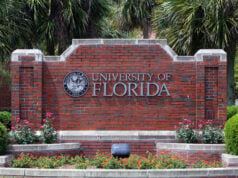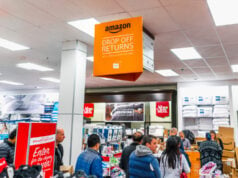
By Tom Marquardt And Patrick Darr
Historically, the grape variety carménère has had an identity crisis like no other. Bordeaux wine producers abandoned it. Chileans confused it with merlot, and the Italians thought it was cabernet franc.

Anselmo Guerrieri Gonzaga knows this story all too well. In 1974 his father, Carlo, took over managing the family estate of Tenuta San Leonardo in the Trentino region of Northern Italy. He sent Anselmo to Switzerland to study wine, which was rare at the time because few people went to school for that.
Carlo wanted to expand the vineyards in 1989 and purchased more cabernet franc cuttings to add to what he thought were cabernet franc vineyards. When the new vines matured and he tasted the grapes, it became clear it wasn’t the same variety. The grape variety that Trentino winemakers thought was cabernet franc was finally identified as carménère. Still, his father continued to use “cabernet franc” on the label for 20 vintages because that’s what people wanted, and carménère was not an approved grape variety.
“I told him when I returned, ‘I would like you to call it that,’” Anselmo said.
His father listened, and since 2010, the bottles are labeled with carménère. Coincidentally, the grape variety was approved as a DOC in 2008.
Carménère is what Gonzaga calls “the salt of San Leonardo.” Like food needs salt, Trentino wine needs some carménère.
“It’s what completes our wines,” he said.
Small amounts of carménère are in all of San Leonardo’s red wines, and understandably so. Its tannins are softer than those found in, say, cabernet sauvignon. The wine is more medium bodied, which is why French winemakers saw it as part of a blend. In Trentino, it adds interesting hints of spice and earth.
The wines we tasted – blends of carménère, merlot and cabernet sauvignon – were delicious and approachable. They were ideal companions to grilled foods, pasta and even some fish, such as salmon and tuna.
San Leonardo has one of the largest plantings of carménère, a grape variety well suited to the region’s sandy soil, in the region. With the Trentino Alps as a backdrop, the 75 acres of vineyards in the valley benefit from melting snow and warm summer winds from Lake Garda. Grapes ripen slowly and evenly, which moderates alcohol levels.
Although the family estate dates back to 1215 as a monastery, it wasn’t until the 18th century that vineyards were planted by the Guerrieri Gonzaga family. During World War I, the estate was repurposed as a field hospital.

Today, Tenuta San Leonardo is one of the most respected wine producers in Trentino. It is due in part to visiting oenologists who have made an impact on the wine there. The luminaries include Giacomo Tachis, the principal architect behind Super Tuscan blends Sassicaia, Solaia and Tignanello, and consultant Carlo Ferrini.
These incredible wines fit almost every pocketbook. They don’t bear the harsh tannins and boldness of California cabernet sauvignons, a style Anselmo does not embrace. Instead, they are elegant, medium in body, and showing good acidity. Oak is limited to large barriques and tonneaux, mostly used to avoid secondary flavors, such as vanilla and chocolate, more common to California cabernet sauvignon. Fermentation is done in concrete vats to preserve freshness.
Here are the wines we tasted and highly recommend:

Tenuta San Leonardo Terre di San Leonardo 2021 ($24). Half of the blend is cabernet sauvignon while merlot makes up 40 percent and carménère at 10 percent. The heavy dose of merlot gives the wine freshness and roundness while carménère gives it just the right amount of spice. Silky, friendly, delicious and abundant in red fruit character. Raspberry and dark cherry notes.
Tenuta San Leonardo di San Leonardo Villa Gresti 2020 ($39). Anselmo called 2020 a “bizarre” harvest that he was not happy with. “But the wine was a miracle,” he said. “Such delicacy.” Merlot accounts for 60 percent, cabernet sauvignon makes up 30 percent with 10 percent devoted to carménère. Aged 18 months in mostly used tonneau casks, it has charm and soft mouthfeel. Fresh raspberry and cassis notes.
Tenuta San Leonardo 2019 ($115). The flagship of the producer, this concentrated wine blends cabernet sauvignon (60 percent) with 30 percent carmenere and 10 percent merlot. It was fermented in concrete vats and aged for 24 months in barriques and tonneaux. This is a wine that can last for decades but is still enjoyable now. Robust and elegant with balsamic wild berry flavors.
Wine picks
Lucia by Pisoni Chardonnay Estate Cuvee 2023 ($50). Jeff Pisoni is doing marvelous work with pinot noir and chardonnay. This estate cuvee is just the tip of his talents. Using grapes from the estate’s Soberanes and Pisoni vineyards, he has crafted a well-balanced wine that exceeds its price in quality. Pear and citrus notes with a dash of vanilla and a kiss of oak. Pisoni also makes an exquisite Soberanes Vineyard Chardonnay ($55) that shows off juicy peach notes and stronger oak notes.

Bouchaine Estate Chardonnay Napa Valley 2023 ($40). The tanginess and zest of this chardonnay makes it special. Apple, lime and melon notes.
Pieropan Soave Classico 2023 ($25). We just loved this Italian soave. A blend of gargenga and trebbiano di soave grapes, it is vibrant and fresh. Floral aromas and pear, white peach flavors. It is great just to sip or pair with lightly seasoned seafood and chicken.
Textbook Page-Turner Proprietary Red Wine 2022 ($80). The vineyards that source this blend of merlot and cabernet sauvignon are close to Harlan and Screaming Eagle, whose prices are far higher than this wine. Raspberry and black cherry notes with a touch of cocoa powder and leather.
Siesta Tahuantinsuyu Cabernet Sauvignon 2019 ($35). The name of the vineyard is a tongue twister, but it has its roots in the Incan language. From Argentina, it is a brilliant wine with forward blackberry and cherry flavors. Soft mouthfeel and long finish. We loved its effusive berry and pepper aromas.
Disclaimer
The information contained in South Florida Reporter is for general information purposes only.
The South Florida Reporter assumes no responsibility for errors or omissions in the contents of the Service.
In no event shall the South Florida Reporter be liable for any special, direct, indirect, consequential, or incidental damages or any damages whatsoever, whether in an action of contract, negligence or other tort, arising out of or in connection with the use of the Service or the contents of the Service. The Company reserves the right to make additions, deletions, or modifications to the contents of the Service at any time without prior notice.
The Company does not warrant that the Service is free of viruses or other harmful components












